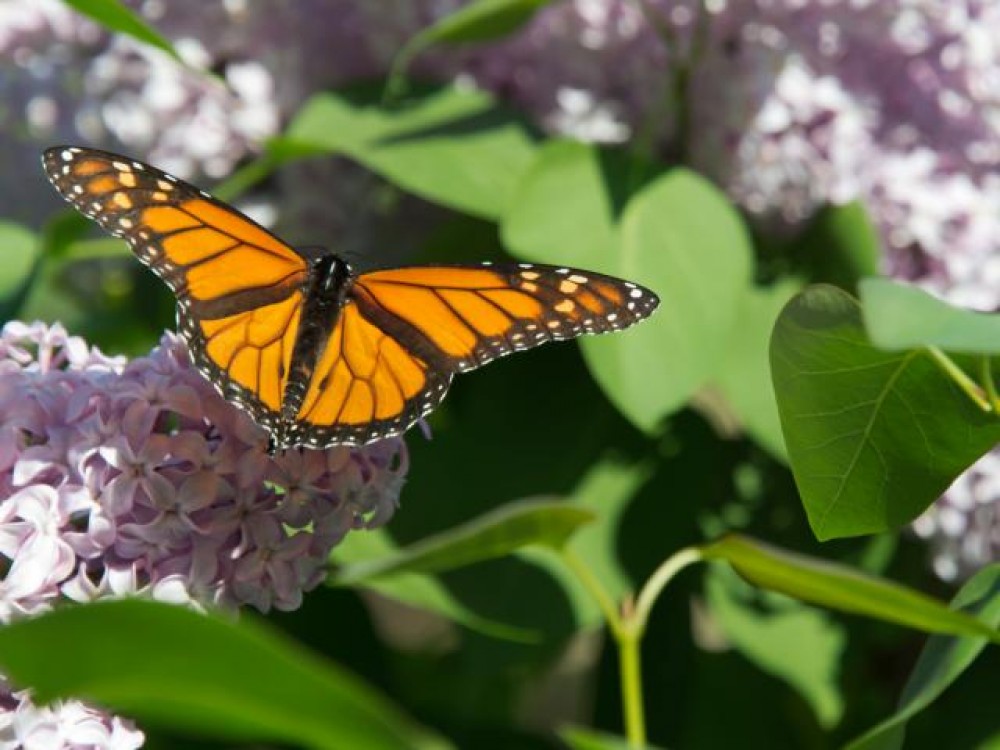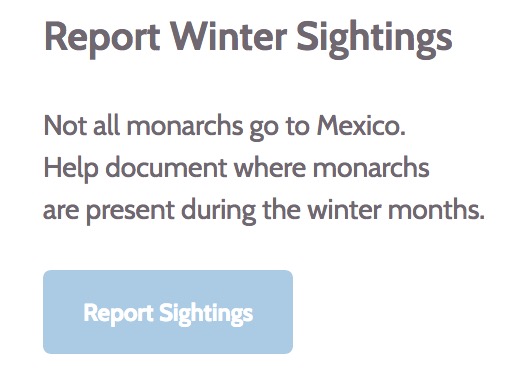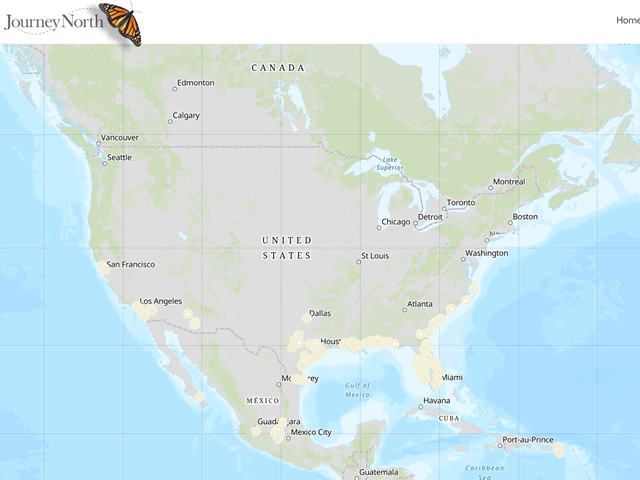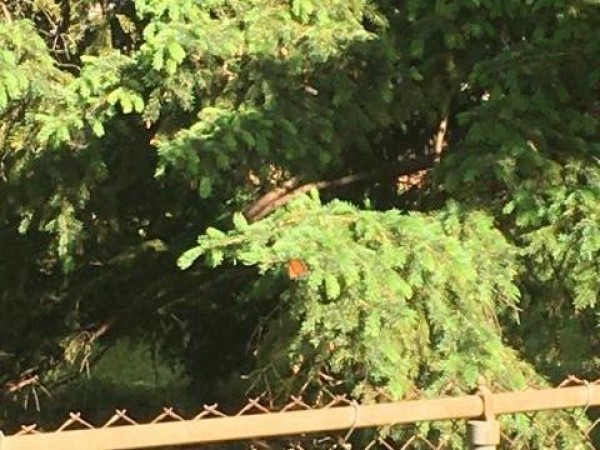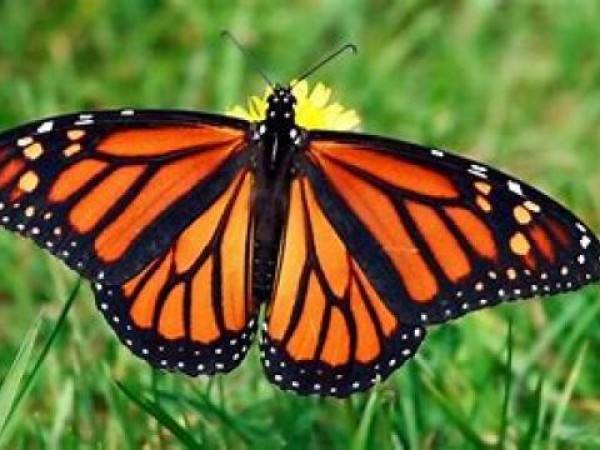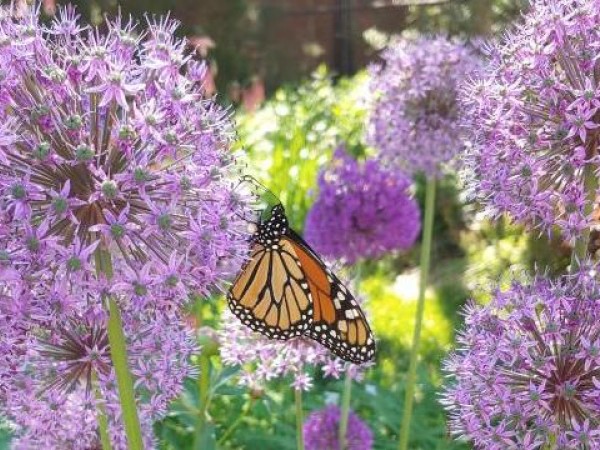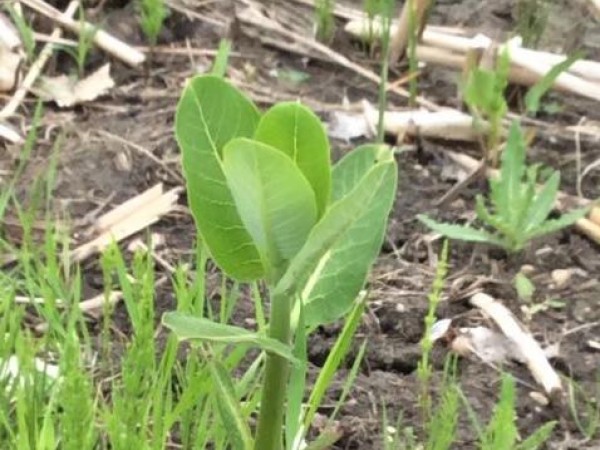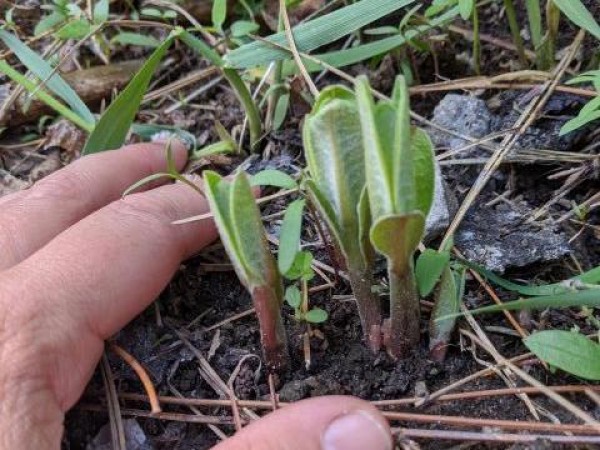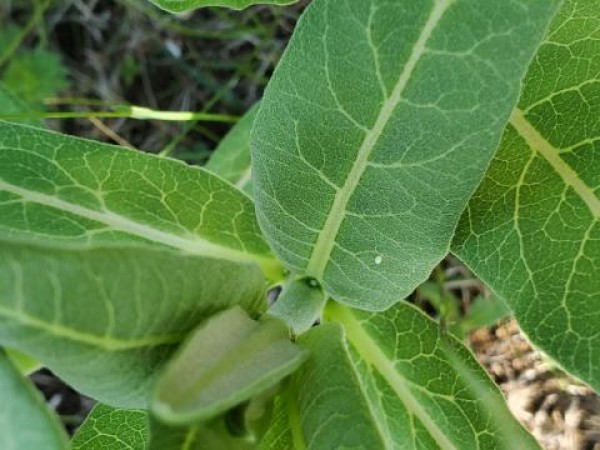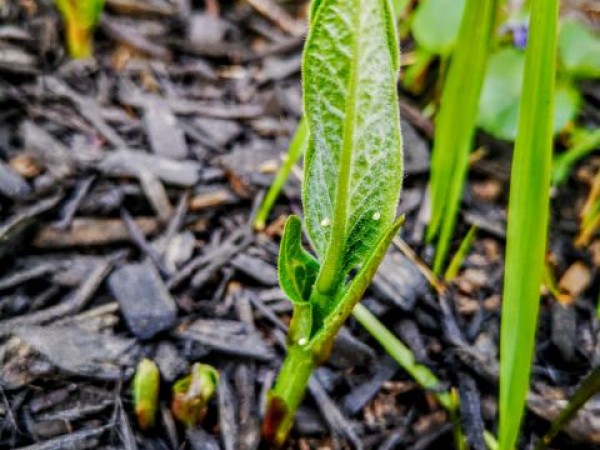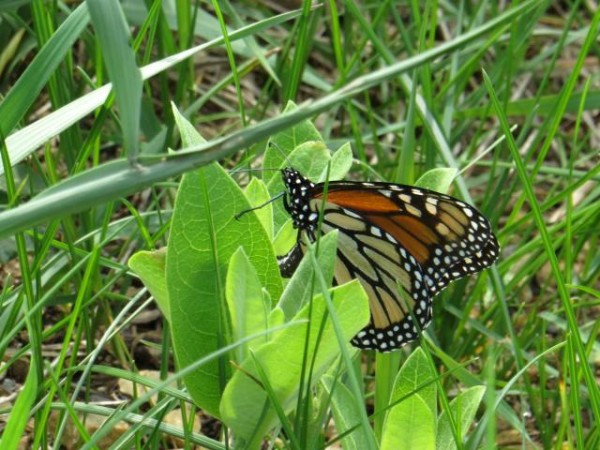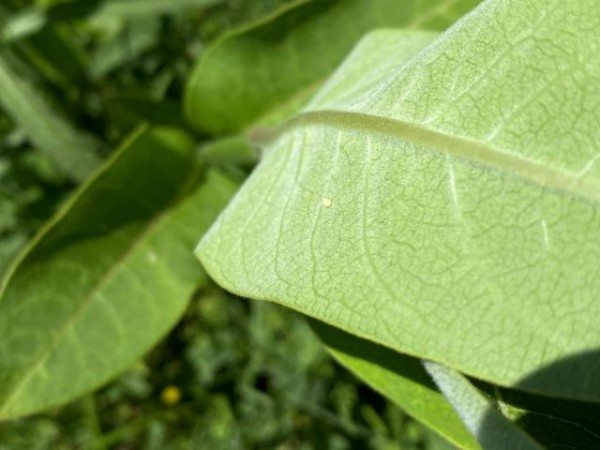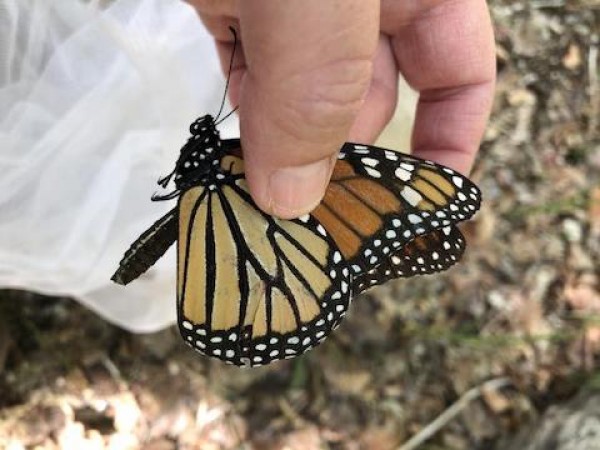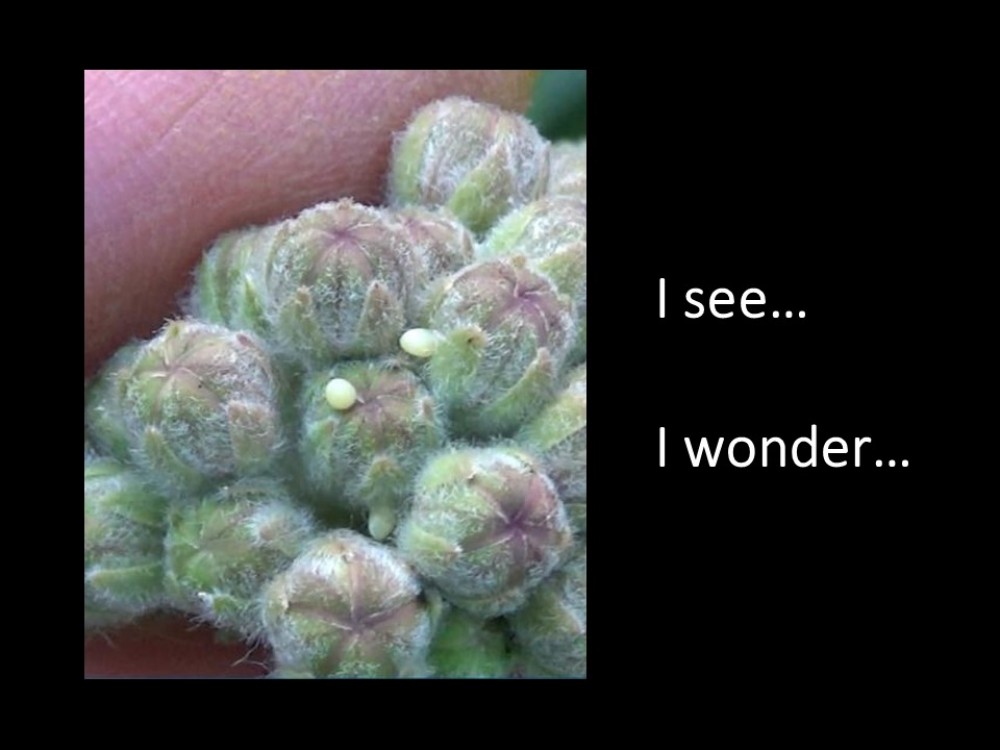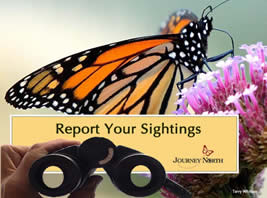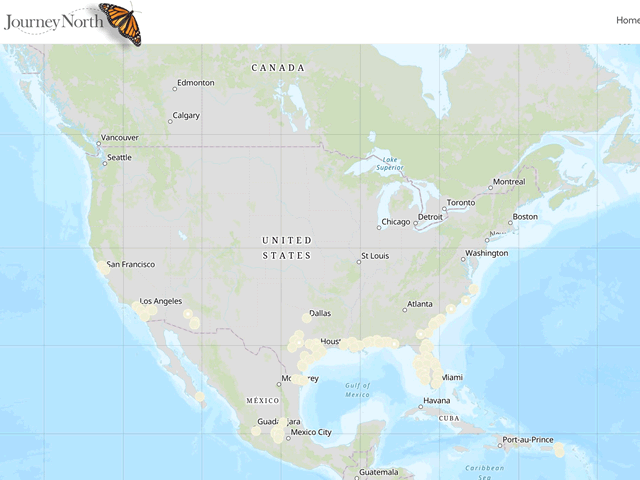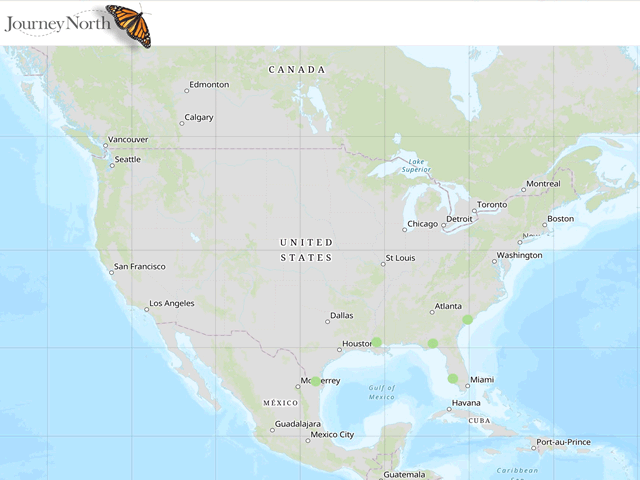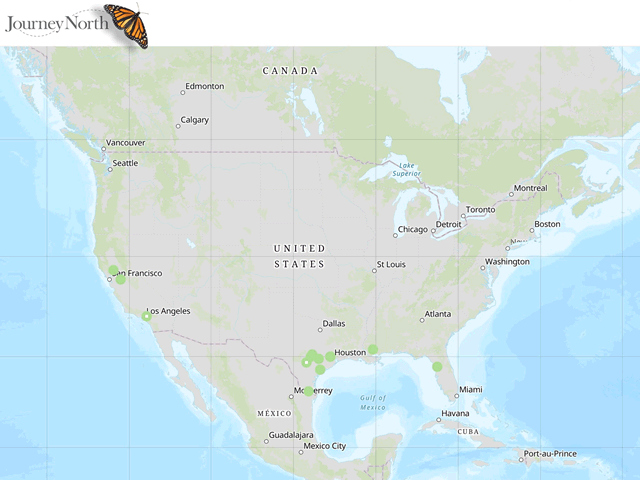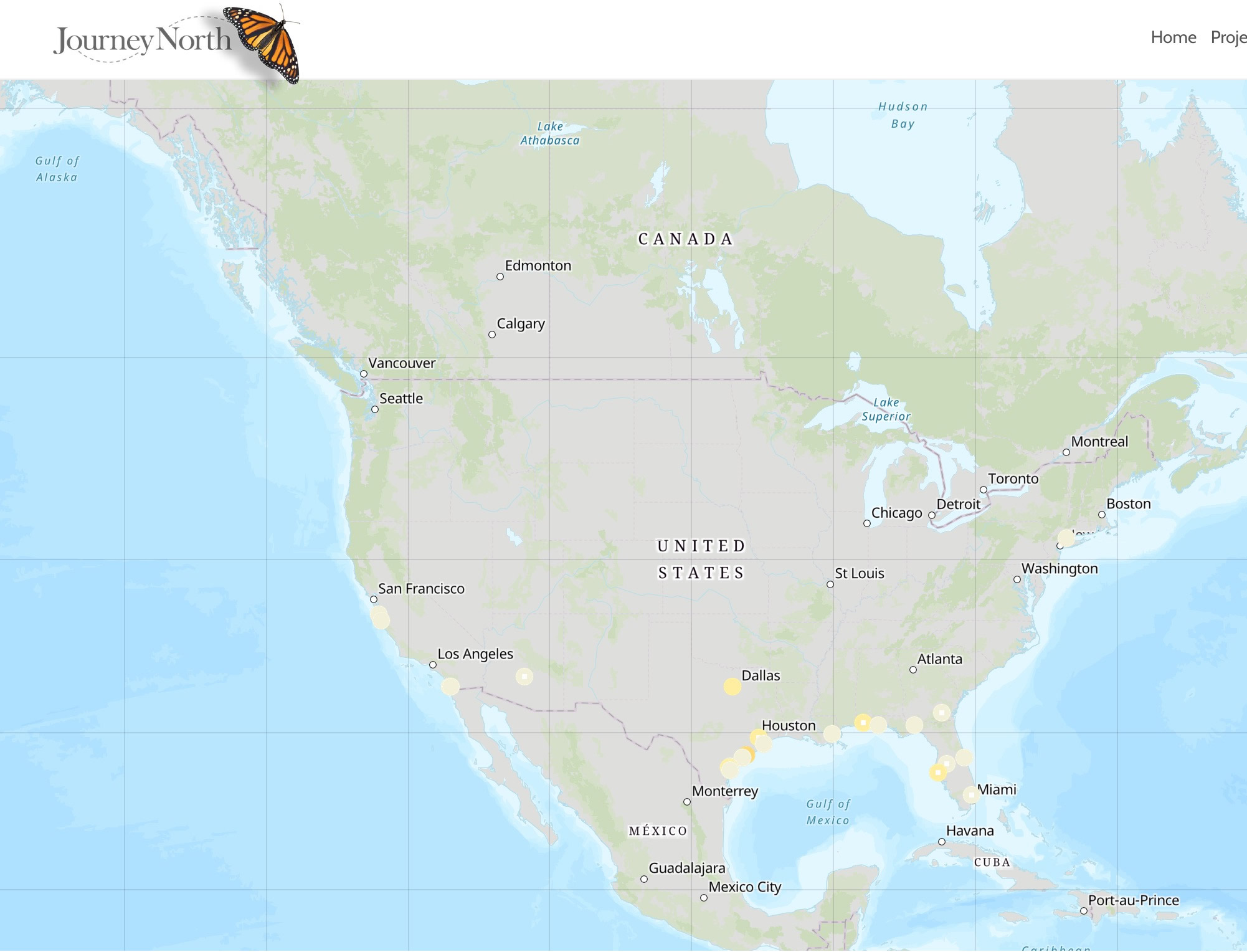Still Journeying North
Eastern Population of Monarchs
Migration edge
Last week, monarchs had yet to arrive in Minnesota and Maine. Well, the wait is over for Minnesota. The northern most sighting was submitted by Journey North citizen scientist, Adam, from Aurora, MN. Numerous first adult monarch sightings are coming in from Wisconsin, Minnesota, and Michigan as well as the Greater Toronto Area. Still no "first sightings" submitted for Vermont, Maine and the Canadian Maritime provinces of New Brunswick, Nova Scotia and Prince Edward Island.
From Minneapolis, MN: Shannon reported, "A short time after the sun broke through an otherwise cloudy day, the monarch was flying around neighbors backyard and cane to rest on an evergreen." (05/25/2020)
From Harrisville, MI: On a walk to Harrisville State Park, Frank "saw a female monarch and photographed it at 3:55 PM. All three monarchs were nectaring on dandelion flowers." (05/26/2020)
From Grosse Pointe, MI: Laura, noted one adult monarch on her backyard allium flowers. (05/26/2020)
Numerous Egg and Larvae Sightings Along Milkweed Trail
The monarch's northern limit is defined by milkweed's northern limit. This linked map shows the northern extent of milkweed. Journey North citizen scientists have just begun to observe milkweed growing along the northern reaches of the Milkweed Trail.
From Steinbach, MB: Marcie found, "common milkweed growing on the bank of a drainage ditch. This is the only plant seen so far. With the recent rains hopefully more will start sprouting." (05/26/2020)
From Parry Sound District, ON: Anna said she has been "checking daily but after a full day of heavy rain [her milkweed] is finally popping up." (05/25/2020)
From Camden, ME: Dottie reported, "This is only about 1/2 inch high...YAY! So the monarchs won't be too far behind!" (05/17/2020)
Journey North observers have sighted eggs and larvae all along the Milkweed Trail. Eggs are being deposited on milkweed shoots with the majority of sightings concentrated around the Great Lakes Region.
From Markham, ON: Carmen reported, "Went for a check of milkweed growing progress, surprising found 16 eggs on couple of milkweed plants along the curbside at East Markham." (05/27/2020)
From Toronto, ON: Lawrence, "found 15 eggs on 2 shirt 4 inch height milkweed." (05/25/2020)
From Menomonie, WI: Pam, "watched this female deposit eggs." (05/26/2020)
From Hudson, OH: Cade, "Found 16 eggs, all on common milkweed on a bike trail...78 stalks total. I also checked the same milkweed patch yesterday and found nothing, so I know they were laid yesterday evening or this morning. I did not see any adult monarchs...The milkweed is about 8 to 10 inches tall..." (05/26/2020)
From Minneapolis, MN: Mary noted, "We haven't seen a monarch yet, but friends reported one a block from our house. We checked all the common milkweed three or four times during the day and finally found one egg at about 6:30 in the evening." (05/26/2020)
The northern most sightings of monarch caterpillars are located at the 42nd parallel north.
From Willis, MI: Joann, "didn't see the monarch but I did see several eggs and one larva just hatched on milkweed about a foot tall. My first milkweed got frost burnt but may more come up. Waystation 11286." (05/27/2020)
From Evanston, IL: Michael observed "the eggs laid by a visiting monarch on the 23rd are hatching this afternoon." (05/27/2020)
Western Monarch Population Migration News
Gail Morris, Coordinator of the Southwest Monarch Study, provides an update on the Western Monarch Population in her weekly report. This week Gail writes,
Heading North!
Monarchs continued to expand into Utah reaching the Eastern border with Colorado along the Green River. At the same time monarch sightings and breeding continued along the Southern California coast this week. Their Spring journey is almost reaching its end as they near their summer breeding grounds.
Monarchs expand their range in the West
Emily was walking in the fields at Dinosaur National Monument on Sunday, May 24, in Jensen, Utah, located in the northeast corner of the state. To her surprise, there was a monarch! She reports, “Ragged male, wings torn in places. Flying low, checking things out. Not much in bloom right now here except Rocky Mountain irises that are on the way out. My first sighting of the season. I only saw one monarch today.” Emily continued her hike in the area looking for possible nectar for migrating monarchs. She stopped to look at the thicket of Joe Pye Weed monarchs love in late summer. But this monarch favorite was still small and growing and she didn’t find anything in bloom. “Oh, but houndstongue is starting to flower. It’s an invasive.” A major challenge of migrating monarchs is Spring nectar to fuel their flight. They may feed on species in flower that normally wouldn’t draw their attention when many native flowers are in bloom. Emily walked along the Green River searching as well but didn’t find much else to draw their attention...
Plant Pollinator Gardens and Keep Reporting to Journey North
Nectar is important for migration, but monarchs need nectar during the breeding season, too. Females produce hundreds of eggs and travel widely in search of milkweed. Males fly across the landscape in search of females, patrol patches of milkweed, and produce energy-rich spermataphores to deliver to females during mating. Do some research to find nectar-rich flowers that grow well in your region. Pay attention to flowering dates so you can provide nectar for monarchs from the time they arrive in the spring until they migrate south in the fall. Monarchs need milkweed, but they need nectar plants too.
Continue to report monarchs, monarch eggs, monarch caterpillars and milkweed.
Monarchs & Milkweed Spring / Summer Maps
After FIRST sightings, please report:
- Monarch Adult Sighted
- Milkweed Sighted
- Monarch Egg Sighted
- Monarch Larva Sighted
- Monarch (OTHER observations) *including behaviors such as mating and nectaring

